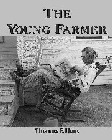
|
Mysteries
Secret Societies
Occult Conspiracy : Secret Societies Their Influence and Power in World History
|
Occult Conspiracy : Secret Societies Their Influence and Power in World History

Description
Secret Societies
Their Influence and Power in World History
by Michael Howard
This absorbing text traces the occult influence of secret societies on politics and statecraft through the centuries from ancient Egypt to the present era, showing how they affected such well-known historical figures such as John Dee, Frederick the Great, Francis Bacon, Benjamin Franklin, Helen Blavatsky, Rasputin, and Woodrow Wilson.
From the book:
Because of the nature of secret societies, little has been known until now about their activities, for both good and evil, in the affairs of the world.
Groups as diverse as the Freemasons, Rosicrucians, and Knights Templar affected the course of the French and American revolutions as well as the overthrow of the medieval order.
About the Author
Michael Howard has been a student of secret societies and the occult for thirty years, and is an expert on Anglo-Saxon runes. He makes his home in Wales, and has conducted studies of the prehistoric stone circles of that area.
Table of Contents 
Preface
1. The Ancient Mysteries
2. The Curse of the Templars
3. The Rosicrucian Connection
4. The American Dream
5. German Nationalism and the Bolshevik Revolution
6. Nazism and the Occult Tradition
7. Secrets in the Vatican
8. The Occult and Modern Politics
Chronology
Bibliographic Notes
Index
'The following is not intended to be an exhaustive chronology of the influence of the occult tradition and the secret societies on world history. It does highlight key events which can be traced to these sources since ancient times' ~MH
40,000 BC
Early establishment of mystery schools, as depicted in Lascaux cave paintings.
30,000 BC
According to some occult traditions this period saw the colonization of Asia and Australasia by the inhabitants of the lost continent of Lemuria or Mu. Goddess worship and matriarchal cultures established worldwide.
10,000 BC
Evidence suggestive of early contact between extraterrestrials and Stone Age tribes in Tibet.
9,000-8,000 BC
Estimated date of the destruction of Atlantis, according to some occult traditions. The Atlantean priesthood flee to establish colonies in the British Isles, Western Europe, North Africa and South America. Rise of the Northern Mystery Tradition centered on the island Thule and the Aryan culture. Invention of the Ruinic Alphabet.
5,000 BC
First primitive cities established in the Middle East. Agriculture begins with domestication of animals such as sheep and goats. Possible contact between extraterrestrials and Sumerian culture.
5,000-3,000 BC
Formation of two lands in pre-dynastic Egypt ruled by outsiders(Isis and Osiris). The Egyptian pantheon of gods established including Horus, Thoth, Set, Ra, Ptah and Hathor. Pharoahs regarded as the divine representations of the Gods.
3,000-2,000 BC
Building of the burial mounds and chambered tombs in Western Europe and the Mediterranean area; the Sphinx and the Great Pyramids of Giza and Cheops of Egypt, and the ziggurat (Towers of Babel) in Ur. Sarmoung Brotherhood founded in Babylon.
2,000-1,000 BC
Reign of Thothmes III in Egypt (c.1480 BC). Foundation of the Rosicrucian Order. Reign of Ankhenaton (c.1370 BCE) who establishes the mystical Brotherhood of Aton dedicated to the worship of the Sun as a symbol of the Supreme Creator. Erection of Stonehenge and other megalithic stone circles in the British Isles. Reign of Ankhenaton's son Tutankhamun who re-establishes the old pantheon of Egyptian gods and goddesses. Moses leads Children of Israel out of slavery in Egypt during the reign of Rameses II to the promised land of Canaan.
1,000 BCE-500 BC
Foundation of the Dionysian Artificers. The building of Solomon's Temple (c.950). Establishment of the city states of Greece and the Olympic pantheon of gods to replace earlier Nature worship. First temples erected in Mexico, Peru and southwest North America. Celts invade Western Europe.
500 BC-001 AD
Celtic culture established in Britain. The foundation of Druidic wisdom colleges in Gaul (France) and th British Isles. Odin recognized as major god of Northern Mysteries replacing the Mother Goddess and is credited with inventing the runes. Buddha, Lao Tze, Confucius, Pythagoras, Plato, and Zoroaster preach their new religions and philosophies. Maya culture in South America. Establishment of Eleusinian mystery cults. Rise of the Essene sect in Palestine and Judea. Birth of Jesus the Nazareth.
001-400 AD
Jesus possibly travels to Tibet and Britain to be initiated into the esoteric traditions of East and West. Crucified for his radical political and religious ideas (c.33). Joseph of Arimanthea establishes first Celtic Church at Glastonbury (c.37). Invasion of Britain by Roman legions and suppression of the Druids (40-60). Paul travels to Asia Minor and Greece preaching his version of the gospel (50). Jewish revolt against Roman rule led by Zealots (66). Essenes supprssed and Dead Sea Scrolls hidden in caves. Temple in Jerusalem destroyed by Romans (70). New testament written. The Nazarenes break away from Judaism to found the Christian Church (c.80). Ormus is converted to esoteric Christianity by Mark. Mithraism and the Mysteries of Isis compete with Christianity in the Roman Empire. Mani, a Persian high priest of Zoroastrianism, is crucified (276). Emperor Constantine declares Christianity the official religion of the Roman Empire. The Council of Nicea defines heresy, condemns paganism and lays the theological foundation for the Catholic or Universal Church (325). Constantine's successor Julian the Apostate (361-363) briefly re-establishes the pagan old religion. Emperor Theodosius outlaws the worship of the pagan gods in Rome and closes the pagan temples (378). Invasion of Rome, Greece and Europe by the barbarians led by the dwarf Atilla the Hun (395-480). Withdrawal of the Roman legions from Britain (395). Foundation of the Order of Comacine by ex-members of the Roman College of Architects.
Paperback -Illustrated
198 pages















